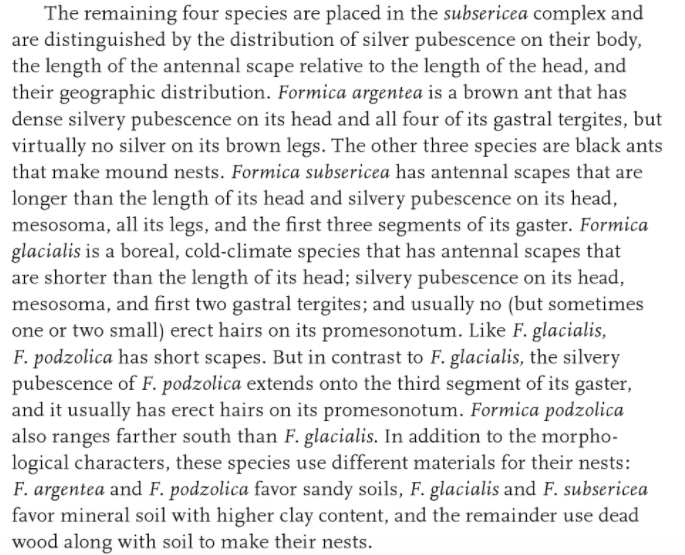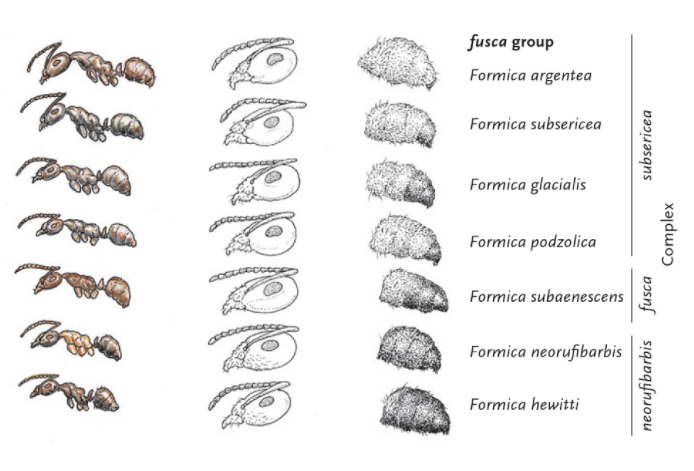1. Location of collection: Dracut, Massachusetts
2. Date of collection: 5/23/17
3. Habitat of collection: Backyard; Open grassy area with a forest nearby. Workers were heavily tending the strawberry blooms.
4. Length (from head to gaster): ~6-7mm
5. Color, hue, pattern and texture: More or less uniformly black/gray. The gaster has a silver sheen to it.
6. Distinguishing characteristics: Posterior head margin is convex. Postpetiole absent.
7. Distinguishing behavior: Workers were foraging on strawberry blooms. They are very fast and sporatic; Very timid ants.
8. Nest description: Nest not confirmed







I wanted to potenially get an ID on these fusca-group Formica, who are my backyard dominators. I would rather a more experienced hobbyist possibly get an ID than me to do so, who has little experience in identifying ants.




















